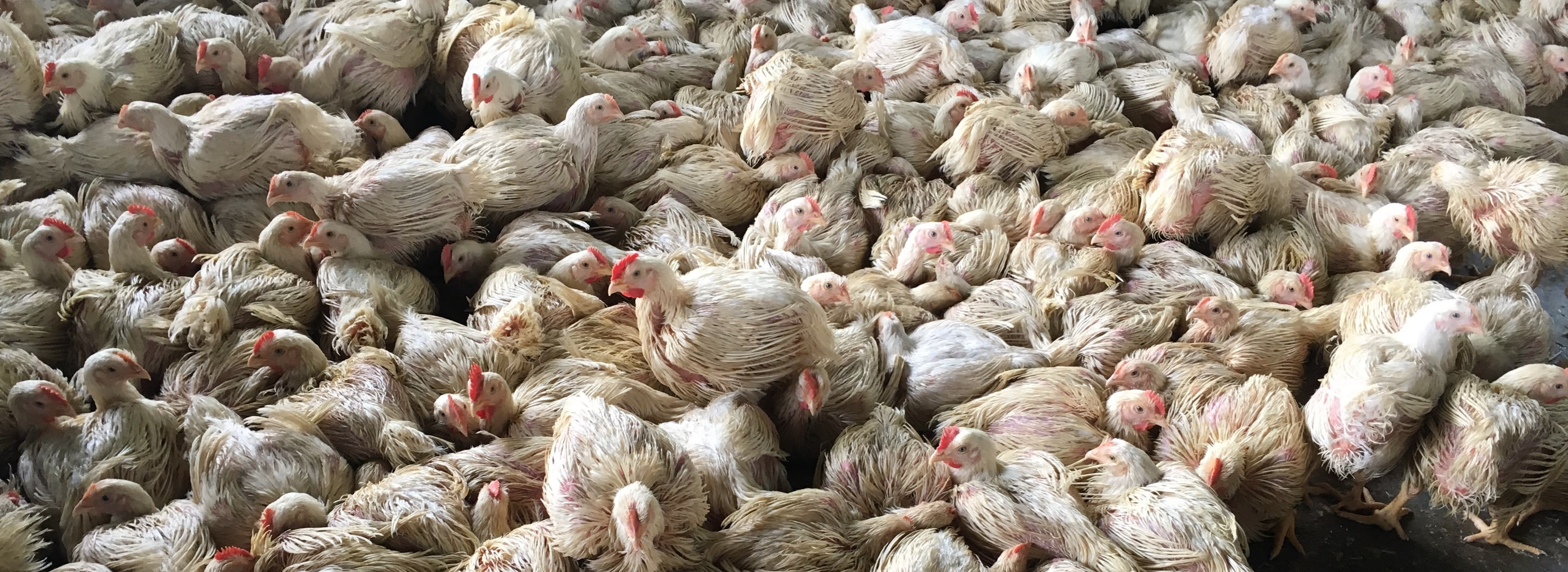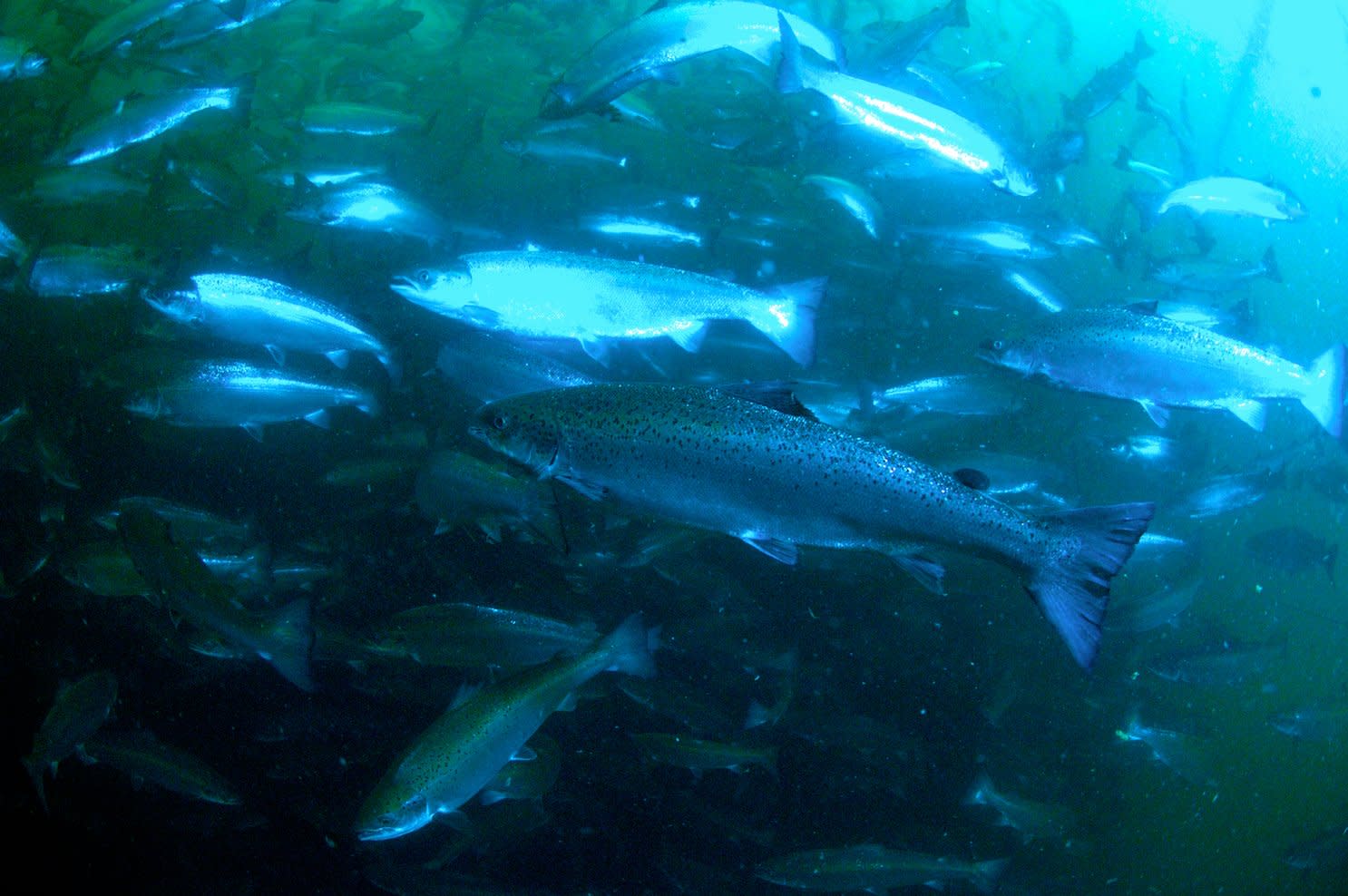




White striping is a disease that shows up in the muscles of chickens. And our report reveals that it’s more widespread than you'd think.

The majority of chickens raised for meat in the UK are kept in overcrowded factory farms, and have been selectively bred over decades to grow much larger and faster than they would naturally. This rapid growth can cause birds physical pain, mental stress, illness, and even early death.
For those who do make it to slaughter, their bodies can show signs of their difficult lives, including strange colouring or textures found in their flesh. One such sign is 'white striping' in chicken breast meat.
It is a common condition that The Humane League UK has investigated, examining chicken breasts in UK supermarkets and finding 85% of supermarket-brand chicken breast to be affected. In the US, The Humane League undertook a similar investigation in 16 supermarkets and found white striping in at least one breast in 99% of packets.
But what exactly is white striping, and should consumers be concerned about it?
What is white striping in chicken meat?
White stripes visible in chicken products are fatty deposits in the muscle. They are usually easy to spot through the packaging, particularly in larger breast meat. White striping can appear in other parts of chickens, including in thighs.
Scientists have identified white striping as a muscle disease, more scientifically known as myopathy. It’s one of several myopathies that have emerged in modern chickens raised for meat. Other diseases that occur are woody breast (which makes meat tougher) and spaghetti chicken (which involves muscle fibres separating in the breast, giving it a spaghetti-like appearance).
The poultry industry is attempting to spin white striping as a sign of quality, comparing it to marbling in beef. The National Chicken Council in the US has even said the condition doesn’t indicate anything is wrong with the chicken, nor mistreatment when the animal was alive.
But beyond this industry spin, white striping is a physical reminder of the suffering of chickens on factory farms, of which consumers should be aware.
What causes those white stripes in chicken breasts?
The main cause of white striping is the rapid growth of factory farmed chickens, caused by decades of selective breeding. This is all to drive profit for the meat industry - a chicken that grows bigger and faster makes more profit.
But this fast growth causes health issues for the chickens. Not only can it lead to lameness and organ failure, but it also restricts blood supply to the chickens’ muscles, causing them to degenerate. White striping and other myopathies are the result.
What's wrong with eating chicken?
People eat more chickens today than ever before. Every year, around 70 billion chickens are slaughtered for meat globally, far outnumbering other land animals raised for meat.
Chicken meat has a reputation for being healthy, with the breast considered particularly low in fat and high in protein. But breast meat that displays white striping may not actually be that good for you.
While it’s considered safe to eat chicken breasts with white striping, it won’t have the nutritional value consumers might expect.
Since white striping is actually fatty deposits, chicken breasts with the condition can have up to 224% higher fat content and 9% less protein than unaffected breasts. The collagen levels in white striped chicken breasts can also be 10% higher, which makes the protein harder to digest.
What does white striping mean for chicken welfare?
Reports have linked white striping to heavier chickens. Factory farmed chickens today grow much bigger and faster than they did 70 years ago. We call these fast-growing breeds of chickens ‘Frankenchickens’ and they suffer enormously as a result of their fast growth.
Their legs often cannot support their excess weight, causing lameness, bone deformities, and fractures. This can prevent them from moving about freely and many are left to lie in their own ammonia-filled waste, which burns their skin. They can suffer from organ failure and breathing difficulties, sometimes leading to premature deaths.
Does organic chicken have white striping?
Organic farms use slower-growing breeds of chicken. These chickens are much less likely to suffer from some of the health problems that plague faster-growing breeds.
How can white striping be prevented in chickens?
Despite its claims that white striping is no concern, the poultry industry has tried to reduce the condition in chickens, due to consumers not liking the look of it.
They have tried feeding chickens different supplements, and attempted to breed the condition out of the animals. Ultimately, though, eliminating the use of fast-growing chickens - one of the worst practices of modern chicken farming - is the best strategy for eliminating white striping.
How big a problem is white striping?
In 2020, we set out to investigate whether the chicken fillets on British supermarket shelves had similar levels of white striping disease to those reported in scientific journals.
Our findings revealed:
- 85% of packets examined had one breast fillet or more affected by white striping. In fact, some supermarkets had white striping in over 90% of the packets sampled.
- In comparison, just 11% of higher welfare packets of chicken presented the disease.
- All eight supermarkets had white striping disease present in their standard own-brand chicken breast fillets.
- The worst offenders were Asda, Aldi, and Lidl, with white striping present in 94%, 92%, and 92% respectively.
The bottom line
White striping in chicken breasts is unhealthy, unappealing, and a symptom of the cruel treatment of factory farmed chickens.
They deserve better. We’re campaigning for companies like supermarkets to sign up to the Better Chicken Commitment (BCC), a set of criteria for better welfare, including a switch to slower growing breeds.
You can join thousands of other compassionate advocates who are calling on supermarkets to stop selling fast-growing chickens by signing up to receive our emails.








